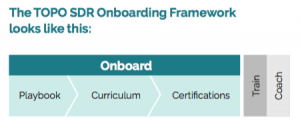— September 7, 2017

geralt / Pixabay
If you’re looking to conduct a social media audit, know that you are ahead of many businesses when it comes to social media governance. As you probably already know, protecting your business from brand damage and PR crises can be made easier once you have evaluated all social media assets.
Without further ado, here are the three steps businesses should cover as part of a comprehensive audit process:
1. Discovery
When beginning a social media audit, many businesses dive right into the process of examining content that has been published on known and approved social media accounts, such as Facebook, LinkedIn, Twitter, YouTube and so on. However, our overwhelming experience here at Brandle is that enterprises often have hundreds of Points-of-Presence (POPs) populating the social media landscape whose existence comes as a total surprise.
After all, finding a new or neglected social media touchpoint is usually not a good news story. At best, the narrative goes: “We are lucky we found this before it potentially misleads our customers and harms our brand.” At worst, it goes: “We need to shut this down ASAP and do damage control immediately.”
That’s why the first step of every audit should be a Discovery process to reveal social media POPs that businesses do not know about. These can include (but are not limited to):
- Corporate POPs (points-of-presence) that may have been created without approval
- Platform-generated pages (e.g. Facebook, Google, Yelp, Wikis, etc.)
- Key employee accounts (such as executives and employee ambassadors)
- Community sites created by customers or third parties (e.g. review websites, advocate sites, partner sites, etc.)
- Counterfeit and phishing sites that are are significant risks to your company. Send these directly to Legal or to the team that will conduct monitoring or cease and desist action.
Create an Inventory of these sites and create a triage plan of how you will monitor them, shut them down, or merge them. The sites that you determine should stay active should be added to your known social media inventory and take part in the rest of the audit process.
2. Social Media Network Audit
Before moving to the audit process for the social media accounts, first review your business strategy for each network through these steps:
- Decide whether the network has been a positive channel for the business, and if you should continue efforts.
- Compare new networks and determine your brand strategy (or brand placeholder) and how you will measure success should you choose to participate.
- Review platform business options (such as Global pages) and the merging process (for system-generated pages).
- See if any new network policies, features, and regulations have been implemented or changed since your last review. Ensure you are adhering to changes and taking advantage of new opportunities.
Knowing your general platform strategy and any new policies and opportunities will help you to complete a quality audit.
3. Brand Presence Audit
Once new (discovery) and known social media POPs are inventoried you can begin with a brand presence audit. This is an audit to review the Profile data and ensure:
- Credentials are known and documented in a secure password locker.
- Attached tools are documented so you know the risk avenues into the company and into your customer’s computer.
- Brand imagery is current and on brand standard.
- Regulatory requirements are precisely followed.
- Messaging within the “About” and description area are consistent and on brand.
- Referenced website is correct.
- New opportunities are recognized (will you be adding awards to the Impressum category on Facebook?).
- Merge strategy for Place Pages into a main UID (and track that UID).
- Document the multiple URLs of the same page (the original URL, the vanity URL, network-generated URLs).
4. Content Audit
Once the Brand Presence Audit is completed and you know your strategy for which POPs you will shut down, which need to be merged, and which need profile changes, then you can move to the content audit. Waiting until this point to review content means you don’t waste time on POPs that will be handled in another fashion. This is an audit of the content stream to ensure that the account manager is:
- Posting quality, on brand and approved content
- Is engaging with customers with the voice of the brand and the agreed upon protocol (style, escalation process, offers, etc)
- Complying with regulatory standards required for your industry.
This audit process will ensure that you are performing sound social media governance, keeping the risk factors to your company under control, and protecting your brand reputation.
Learn More

In this case study you’ll learn:
- Why multiple spreadsheets can’t keep up with the digital world.
- How a manual audit missed almost 50% of a global company’s brand presence.
- Why a manual audit put a regulated company at greater risk!
This article originally appeared on the Brandle Blog and has been republished with permission.
Digital & Social Articles on Business 2 Community
(44)





